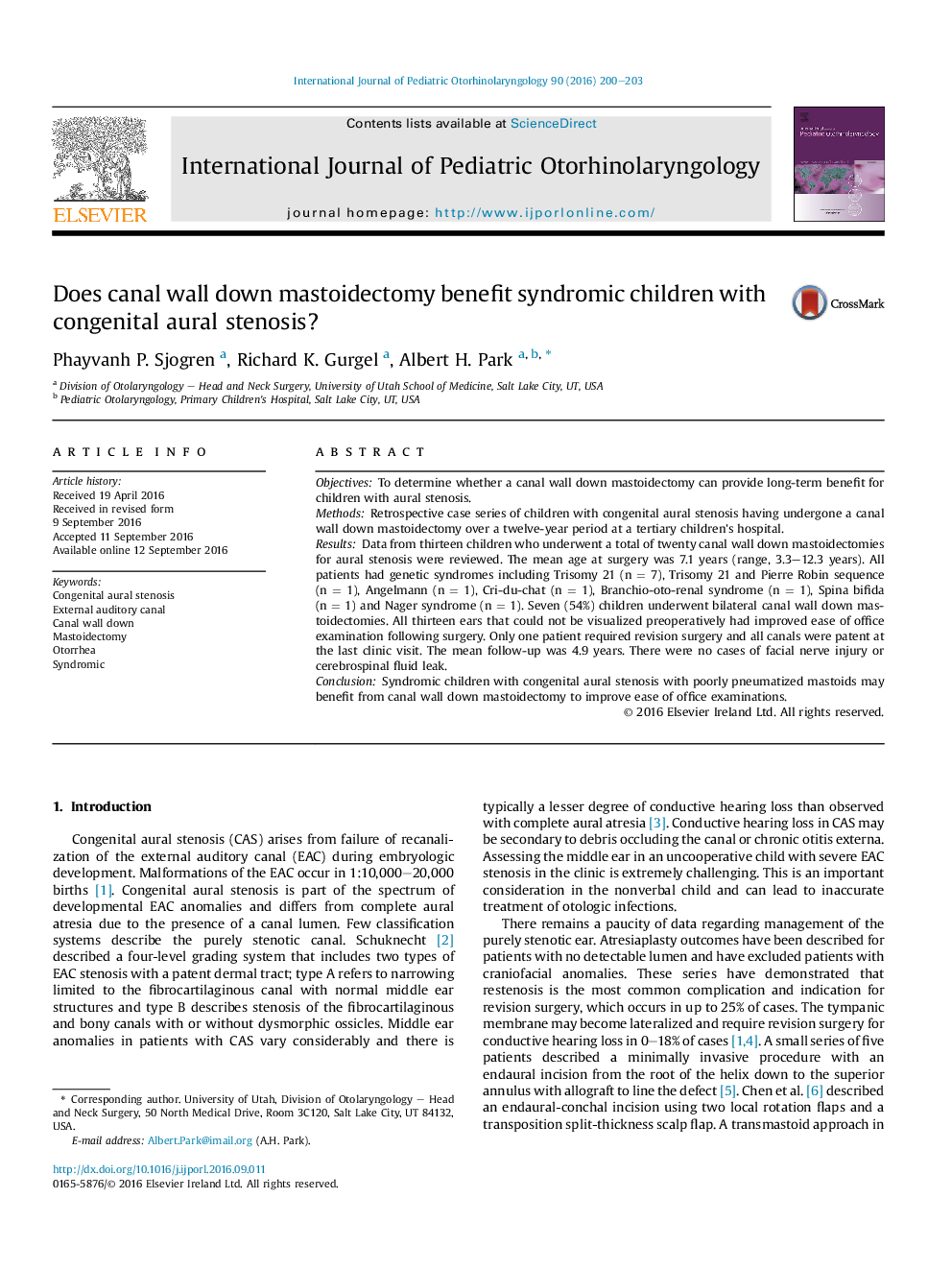| Article ID | Journal | Published Year | Pages | File Type |
|---|---|---|---|---|
| 6213024 | International Journal of Pediatric Otorhinolaryngology | 2016 | 4 Pages |
ObjectivesTo determine whether a canal wall down mastoidectomy can provide long-term benefit for children with aural stenosis.MethodsRetrospective case series of children with congenital aural stenosis having undergone a canal wall down mastoidectomy over a twelve-year period at a tertiary children's hospital.ResultsData from thirteen children who underwent a total of twenty canal wall down mastoidectomies for aural stenosis were reviewed. The mean age at surgery was 7.1 years (range, 3.3-12.3 years). All patients had genetic syndromes including Trisomy 21 (n = 7), Trisomy 21 and Pierre Robin sequence (n = 1), Angelmann (n = 1), Cri-du-chat (n = 1), Branchio-oto-renal syndrome (n = 1), Spina bifida (n = 1) and Nager syndrome (n = 1). Seven (54%) children underwent bilateral canal wall down mastoidectomies. All thirteen ears that could not be visualized preoperatively had improved ease of office examination following surgery. Only one patient required revision surgery and all canals were patent at the last clinic visit. The mean follow-up was 4.9 years. There were no cases of facial nerve injury or cerebrospinal fluid leak.ConclusionSyndromic children with congenital aural stenosis with poorly pneumatized mastoids may benefit from canal wall down mastoidectomy to improve ease of office examinations.
